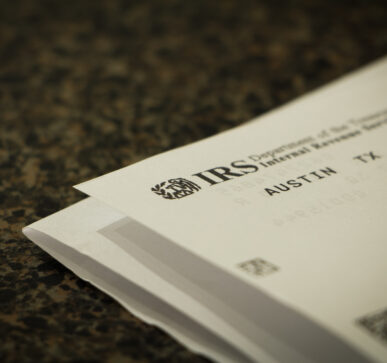On 12/19/23, the IRS announced the restart of IRS collection notices as well as a new penalty relief for approximately 4.7 million individuals, businesses and tax-exempt organizations that were not sent an automated IRS collection notice reminder during the Covid-19 pandemic. The IRS will be providing about $1 billion in penalty relief for five million tax returns filed by 4.7 million individuals, businesses, trusts, estates, and tax-exempt organizations. Most of those receiving the penalty relief make under $400,000 a year. During the Pandemic, the IRS temporarily suspended the mailing of automated reminders to pay overdue tax bills starting in February 2022. These reminders would have normally been issued as a follow-up after the initial notice. Although these reminder notices were suspended, the failure-to-pay penalty continues to accrue for taxpayers who did not fully pay their bills in response to the initial balance due notice. IRS stated that it is taking several steps in advance of resuming normal IRS collection notices for tax years 2020 and 2021 to help taxpayers with unpaid tax bills, including some people who have not received a notice from the IRS in more than a year; including issuing a special reminder letter starting January 2024. The letter will alert the taxpayer of their liability, easy ways to pay and the amount of penalty relief, if applied. The IRS urges taxpayers who are unable to pay their full balance due to visit IRS.gov/payments to make arrangements to resolve their bill.
What will start happening in January 2024 with IRS Collection Notices?
- IRS will begin sending automated collection notices and letters to individuals with tax debts prior to tax year 2022, and businesses, tax exempt organizations, trusts and estates with tax debts prior to 2023, with exceptions for those with existing debt in multiple years. These notices and letters were previously paused due to the pandemic and high inventories at the IRS but will gradually resume during the next several months. Current tax year 2022 individual and third quarter 2023 business taxpayers began receiving automated collection notices this fall as the IRS took steps to return to business as usual.
- The pause in collection mailings affected only follow-up reminder mailings. The IRS did not suspend the mailing of the first, or initial, balance due notices for taxpayers such as the CP14 and CP161 notices.
- The pause meant that some taxpayers who have long-standing tax debt have not received a formal letter or notice from the IRS in more than a year while some of this older collection work has been paused. To help the taxpayers in this category as the normal processes resume, the IRS will be issuing a special reminder letter to them starting January 2024.
- This reminder letter will alert the taxpayer of the liability and will direct them to contact the IRS or make alternative arrangements to resolve the bill. Tax professionals and taxpayers will see these reminder letters in the form of letter LT38, Reminder, Notice Resumption.
- This letter will remind taxpayers about their tax liability, giving them an opportunity to address the tax issue before the next round of letters are issued. After receiving the reminder mailing, these taxpayers with long-standing unresolved tax issues will receive the next notice, informing them of a more serious step in the tax collection process.
- The IRS urges taxpayers to carefully read any letter or notice they receive before calling the IRS.
- The IRS will issue these balance due notices and letters in gradual stages in 2024 to ensure taxpayers who have questions or need help are able to reach an IRS assistor. This will also provide additional time for tax professionals assisting taxpayers.
Here’s what taxpayers should know about possible penalties and interest
- Taxpayers who owe tax and don’t file on time may be charged a failure-to-file penalty. This penalty is usually 5 percent of the tax owed for each month or part of a month that the tax return is late, up to 25 percent.
- The failure-to-pay penalty applies if a taxpayer doesn’t pay the taxes they report on their tax return by the due date or if the taxpayer doesn’t pay the amount required to be shown on their return within 21 calendar days of receiving a notice demanding payment (or 10 business days if the amount is greater than $100,000).
- The IRS is required by law to charge interest when a tax balance is not paid on time. Interest cannot be reduced due to reasonable cause. Interest is based on the amount of tax owed for each day it’s not paid in full. The interest is compounded daily, so it is assessed on the previous day’s balance plus the interest. Interest rates are determined every three months and can vary based on type of tax; for example, individual or business tax liabilities.
Based on the information in the taxpayer’s 1040 tax return, if the taxpayer does not pay the first notice, IRS sends a second notice, plus additional interest, and penalties as they continue to accrue. The collection process begins when this second – or final collection notice – is not paid.
Are you a taxpayer with tax debts?
Are you a taxpayer that could receive IRS collection notices?
Who is your professional tax advisor? ©





